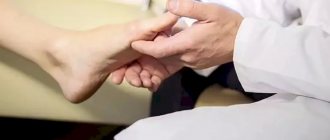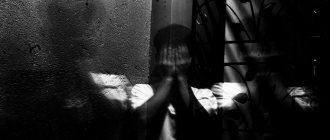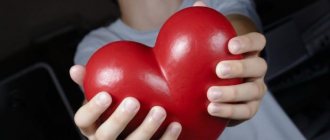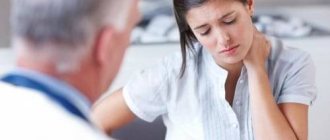They talk about cardiophobia when a person is pathologically afraid of heart disease. It seems to him that he has a serious heart pathology, he perceives various symptoms as a disaster. Real panic appears with rapid heartbeat, breathing, a single extrasystole, after physical exertion. Often the patient confuses heart pain with intercostal neuralgia. Instead of living a full life, a person constantly undergoes many different examinations, but in fact he needs to see a psychotherapist.
Causes
The main causes of fear are long-term psychological disorders and increased anxiety. The disease is most typical for people who are insecure and emotionally unstable. Cardiophobia often develops in sanguine people who like to exaggerate everything and do not know what relaxation is.
Cardiophobia can develop after a stressful situation. As a rule, the first symptoms appear after the diagnosis of a serious heart disease in a loved one. Stories about fatal heart attacks are especially frightening.
For some, the first symptoms of phobia occur during a medical examination. The patient may misinterpret a harmless deviation; a picture of death from cardiac pathology is immediately drawn before his eyes. There is a group of patients who really have the disease, but greatly exaggerate the real situation.
Most often, cardiophobia develops with internal anxiety, if a person feels helpless, lonely, and is not satisfied with the circumstances of the outside world. Serious health problems arise due to fears. A person can work himself up so much that he suffers from loss of strength and high blood pressure.
Symptoms
There are three different forms of the disease.
Pseudoreumatic
Reminds me of rheumatic. The patient often suffers from chronic tonsillitis, and complains of shortness of breath, increased heart rate, and pain in the heart. Sometimes painful sensations in the joints bother me. Symptoms worsen with physical activity.
Cardiophobia can develop in the case of a rheumatic disease in a close relative who is in the rheumatology or cardiology department. In this case, there may be slight functional disturbances - the temperature rises, the ECG changes. When a patient looks at real patients, he begins to find all the symptoms in himself.
Pseudo-infarction
As a rule, it develops in those who are strongly associated with medicine: doctors, nurses, etc. Fear of a heart attack may appear after a slight pain in the heart. The patient is very afraid of an attack and death. In this case, the patient is actively examined and treated, but the attacks constantly recur. They can be caused by:
- Osteochondrosis of the neck.
- Functional failures during menopause.
Attention! With a pseudo-infarction, heart medications and Nitroglycerin do not help at all.
When the examination shows nothing at all, the patient does not calm down, but becomes even more nervous. He believes that his condition is hopeless.
Neurotic
The patient says that he has a lot of pressure in his chest, his heart rate increases, and he doesn’t like his own breaths. Often this type may not be accompanied by attacks, but the patient is still afraid of being alone, afraid of movements, and does not walk down the street by himself. Some lie in bed constantly, fearing for their lives.
During a fear attack, the following symptoms appear:
- The patient is tossing around in bed, too focused on his pain.
- After the doctors convince him that there is no danger, the patient calms down only for a while, then begins to get nervous again.
- The attack lasts several days. After an attack, a person worries about his well-being for a long time.
- A cardiophobe constantly measures his pulse, blood pressure, and focuses on various symptoms.
For the patient, work and various household chores become unimportant; he shifts everything to his loved ones. Some refuse sex and try to avoid various stresses. A person asks others not to scare him, not to turn on scary movies, and not to go to funerals.
In addition, a cardiophobe adheres to a strict daily routine, constantly goes on a strict diet, does not go outside once again, and reads a lot about heart disease. Some people generally refuse to sleep on their left side, suffer from insomnia, and are afraid that they will have cardiac arrest in their sleep.
Diagnostic and treatment methods
They learn about the disease by carefully analyzing all complaints and studying the medical history. To exclude heart pathology, a comprehensive examination is prescribed.
The course of therapy is carried out at home; in case of exacerbation of a mental disorder, the patient is hospitalized. In this case, they are treating a condition that is accompanied by insomnia, anxiety, and affective disorders. Antidepressants and sedatives are specifically prescribed. Additionally, psychotherapy is required, which helps to identify the cause of anxiety and get rid of internal conflict. A psychotherapist will definitely advise you on how to deal with acute and chronic stress. If you treat a phobia in a timely manner, you can quickly get rid of it. In order not to think about various diseases, occupy yourself with something useful, constantly develop, achieve goals, sign up for a gym. This is the only way you will feel absolutely healthy and be able to achieve different goals. For prevention and for your peace of mind, be periodically examined by a cardiologist. Be healthy!
The functioning of the heart can be influenced by external factors, emotional state or physical activity. All this can provoke some reactions in the work of the heart muscle.
Symptoms of cardiophobia.
Fear of death
,
the heart
goes astray, and severe attacks of panic are also present.
A person begins to fear for his life, and the anxious state only gets worse. All this can begin without any disease or internal pathology. When a person has another such attack, he may feel symptoms such as nausea, dizziness, anxiety, and squeezing sensations in the heart area. If measures are not taken in a timely manner, the attack will develop into a more severe form, and then one will feel severe tachycardia and a heartbeat failure, which will quickly spread throughout the body. In addition, there is a sudden increase in blood levels and lack of air. The person begins to suddenly feel extreme fear and panic. For these reasons, the first thought that comes in such a state is that the heart is about to stop and death will occur. The person is close to fainting, but remains conscious. The fear of death
provokes some particularly impressionable people to start running up to people and asking them for help.
Consequences of cardiophobia
.
After a person has experienced this condition once, he begins to develop a phobia. For this reason, there is a breakdown in the mental state and the constant presence of fear for one’s life. Every moment of his life, a person begins to wait for the appearance of an attack or the onset of death. He can no longer be convinced that everything is fine with his health, his close people, a doctor with positive test results for the functioning of the heart muscle. A person trusts only himself, so he constantly listens to his body and measures his pulse rate. Today we will talk in more detail about the concept of cardiophobia (): what it is, how it manifests itself and how to get rid of this problem.
Psychic manifestation
Cardiophobia provokes the appearance of the following manifestations:
- sleep disorders;
- irritability;
- hysteria;
- an aggressive reaction to the remark that it is not heart disease;
- panic attacks, fear of dying in your sleep;
- nausea, dizziness.
Fear of complete cardiac arrest provokes the appearance of persistent clinical depression and can put a person into a prolonged stupor. Disturbances in the functioning of the central nervous system and the death of neurons provoke the appearance of phobic disorders. The brain does not have time to recover. The cause of cardiophobia can be a mental disorder, schizophrenia, manic state, etc.
What is heart neurosis (cardiophobia) and how to get rid of it?
What is (cardiophobia)? The answer is already contained in the word itself: “cardio” - heart and “phobia” - fear, fear. That is, cardiophobia is fear for your heart. People suffering from cardiac neurosis fear that their heart may suddenly stop and they will die. They are afraid of arrhythmia, rapid pulse, and in order to calm down, they constantly listen to their heart, monitor its work, and measure the pulse.
If the pulse is within the limit that a person considers normal for himself, then he calms down. If the pulse is above this limit, the person thinks it is dangerous. At the same time, he begins to worry more - accordingly, his pulse becomes even more frequent.
Then, being sure that he has a diseased heart, a person with heart neurosis begins to limit himself physically. Moreover, this confidence is not based on anything other than his own thoughts: ultrasound, ECG, Holter monitoring show that his heart is absolutely healthy in all respects. But the person still thinks that he has a disease, it’s just that the doctors overlooked something, didn’t notice, didn’t see.
The most interesting thing is that by limiting oneself from physical activity, exercise, sports, certain foods (for example, eliminating coffee or alcohol), a person thinks that by doing so he is saving himself. In some cases, it comes to the point that a person susceptible to heart neurosis/cardiophobia stops watching films and reading books that evoke strong emotions. And at the same time, he constantly monitors his pulse rate, listens to the state of his heart, simultaneously reads some medical literature, communicates on forums and on social networks with people who have a similar problem. It is very difficult for such a person to believe that everything is fine with his heart, although doctors tell him that he does not have any heart disease.
And this is what happens:
A person begins to limit himself physically because his pulse is elevated or some kind of heart failure occurs. With complete rest, it seems to him that he is getting better. And he actually feels better because he doesn't feel the racing heartbeat that he associates with danger.
But the fact is that our heart is designed in such a way that it trains just when we engage in physical activity. And the more physically active a person is (within certain limits, of course), the slower a person’s heart beats in a calm state. Take, for example, the heart of athletes: at rest, their heart rate can be 50-60 beats per minute. It's quite normal. For the average person, this figure varies, on average, from 70 to 90. But what happens? Let's figuratively imagine that the heart is a pump that pumps blood. And the more powerful this pump, the easier it is for it to push more blood with less effort.
The same thing happens with the heart: an athlete’s heart is trained, so in a calm state it is enough for him to make 60 beats per minute to pump the required amount of blood. If a person does not train the heart muscle, it weakens, atrophies, and becomes flabby. Accordingly, in order to move the same volume of blood, the heart already requires a greater number of contractions. Therefore, the pulse quickens and mild tachycardia occurs. But if a person is also anxious, then the pulse becomes even faster, the heart beats faster. No wonder Chekhov said: “As soon as you turn your attention to your heart, it begins to beat 15 beats per minute faster.” But to a person suffering from heart neurosis, it seems that he is still alive precisely because of total control and all kinds of restrictions.
In fact, this is a deception, an illusion.
And the more a person limits himself, the more terrible he becomes. At first he is afraid to go up the stairs, then he begins to be afraid to run, then his fears only increase. And as soon as a person has to physically exert himself a little, his eyes darken, his heart begins to beat faster - and in these symptoms he finds confirmation that he is really sick and that he has some kind of heart problem. But this is a misconception. Cardiophobia is essentially a manifestation of an anxiety disorder. And in order to get rid of heart neurosis, in addition to the fact that a person needs to reduce the general level of anxiety, he will then need to remove all the avoidances that he has introduced into his life.
Let's say right away: this will not happen very quickly. Because if a person has introduced a lot of avoidance into his life in order not to speed up his heart, for example, they excluded running, stopped playing football, hockey, then he will still be afraid. Some people even begin to be afraid of sex. And it takes time to overcome these fears.
Gradually, a person will have to prove to himself that his heart is healthy, precisely through physical activity. By gradually increasing them, he may notice some deterioration in the condition. But in order to prevent this from happening, you need to see a doctor and undergo an examination. Then, after making sure that your heart is healthy and you simply have cardiac neurosis, you need to slowly start playing sports, gradually increasing the load. And if a person does not rush for results, then after 2-3 weeks he will notice that his heart will begin to respond better to the load, and in a calm state it will beat slower. And gradually, working on anxiety, proving to himself that it is not scary, a person will reduce the level of anxiety, his heart will become more trained, and he will receive proof from real experience that his heart is healthy. Over time, he will pay less attention to his heart, start playing sports, lead an active lifestyle, and then completely forget about his worries and fears.
In conclusion, let us reiterate the main points:
1. If a person has a fear associated with the heart, this is cardiophobia (heart neurosis).
2. You need to work on eliminating it in two directions:
- engage in reducing anxiety levels;
— train the heart again, gradually increasing the load;
— be sure to exclude visiting various forums dedicated to the problems of heart neuroses, so as not to collect other people’s negativity.
And you must always remember: you can get rid of cardiophobia (heart neurosis) if you work on yourself correctly, seriously and consistently.
Every person experiences a rather strong emotion throughout his life - fear, which very often helps us survive. But along with constructive fears, people can also encounter destructive (or destructive) ones - these are phobias. The most destructive effects not only on the human psyche, but also on the body as a whole, are phobias associated with possible death from any disease, among which heart disease occupies the first place. Such pathological fear in the scientific literature is called cardiophobia or fear of cardiac arrest.
Cardiophobia ( translated from Greek kardia means heart, phobos - fear
) is a paroxysmal painful sensation in the region of the heart, and the examination does not reveal any functional disorders.
Thus, a sinking heart, pain or rapid rhythm is not caused by dysfunction of the organ itself, but by a disturbance in a person’s mental activity.
This phobia is most often found in young and middle-aged men, and is also observed in neurotic hypochondriacal disorder, endogenous depression, and sometimes temporal lobe epilepsy. Attacks of cardiophobia can last only a few minutes or drag on for several days. There are times when this fear confines a person to bed not only for a couple of weeks, but even for several years. People who are afraid of cardiac arrest ,
I constantly monitor my pulse (they measure it even in public transport), measure my blood pressure more often than usual, listen to my own breathing, and if they notice the slightest deviation from the norm or feel discomfort in the chest area, they immediately require medical help.
Panic attack or heart problems? How to distinguish one from the other and how to treat it
What is a panic attack
Panic attacks can occur in a completely healthy person - healthy both physically and mentally. However, when this symptom appears, the sufferer is terrified that he is seriously ill and will either die from cardiac arrest/suffocation or go crazy. Let’s make a reservation right away: neither one nor the other will happen.
A panic attack is an intense fear that results in increased production of adrenaline. We have already written in more detail about the causes of panic attacks.
A typical scenario: during the first attack of fear, a person calls an ambulance, then the attacks are repeated, he is examined, but no somatic diseases are found. In a favorable scenario, one of the doctors examining the patient refers him to a psychotherapist, and the person finally learns that he is not alone, he has panic attacks, a fairly common problem. It is worse if the attacks become regular, and the person begins to limit himself in activities or movements in order to avoid repeated attacks (some are afraid to ride the subway, others are afraid to leave the apartment altogether). Panic disorder affects up to 5% of the population.
Signs of a panic attack
First, it is important to understand what happens in the body during a panic attack.
A distinctive feature of PA from the disease is its unpredictability and avalanche-like growth. Plus, psychological symptoms are added to the physiological symptoms, Irina Khvingia :
- confusion or narrowing of consciousness; - feeling of a lump in the throat; - derealization: the feeling that everything around is unreal or is happening somewhere far from the person; - depersonalization: the patient’s own actions are perceived as if from the outside; - fear of death; — fear of going crazy or doing something inappropriate (screaming, fainting, throwing yourself at a person, wetting yourself, etc.); - obsessive thoughts. After an attack, a person thinks about the danger for a long time and does not part with disturbing thoughts.
Most often, patients suffering from panic attacks are referred to cardiologists with suspected problems with the heart or blood vessels. Cardiologist at the MEDSI Clinic in Khoroshevsky Proezd, Ivan Efremkin, cited 9 facts that may be useful to people with panic attacks.
Age. Patients under 30 years of age are very rarely susceptible to acute coronary events (myocardial infarction, stroke, aortic rupture (aneurysm), thromboembolism). Yes, this can happen at a young age, but as a rule, there are prerequisites for this (previously established diagnoses). Panic attacks occur without previous diagnoses.
Floor. Panic attacks occur 2-4 times more often in women than in men. And mostly among young women. At the same time, arrhythmia is rarely common in women before the onset of menopause (men suffer from arrhythmia more often), unless, again, they have a burdened history of arrhythmia.
Pressure. During a panic attack, blood pressure usually rises. But if anxiety and fear are accompanied by a sharp drop in blood pressure below the normal limit (generally accepted norms are 120 to 80, but the values can be individually higher or lower), this is an alarming signal. In this case, there may be problems more serious than a panic attack.
Stroke. Many people fear a stroke during a panic attack. But do not forget that with a stroke there are clear neurological symptoms: a person moves his tongue and cannot say anything, one half of the body or face goes numb, an unbearable headache that does not raise any doubts about the need for an ambulance. During a panic attack, your hands may become slightly (!) numb, your feet may become cold and sweaty, and if the headache seems unbearable, it is only from excitement; in fact, it is not.
Forms of cardiophobia
There are three possible options for the course of cardiophobia, which differ primarily in symptoms. These forms are presented below in table form.
| Forms of cardiophobia | Symptoms | Possible reasons |
| Pseudoreumatic | A person complains of pain in the heart (the symptoms are similar to rheumatic disease), rapid heartbeat, frequent shortness of breath, and painful sensations in the joints. The main thing is that the tests indicate normal functioning of the heart. | Previous tonsillitis (very frequent), diagnosed disease (rheumatism, rheumatic carditis) in relatives or friends, high suspiciousness. |
| Pseudo-infarction | A person experiences discomfort, pain in the heart and expects the development of myocardial infarction, therefore they are examined very often and thoroughly (ECG, ultrasound, tests, etc.). He takes medications, but there is no improvement in his health. During attacks, redness of the face and neck (appearance of red spots), rapid heartbeat and breathing, and increased sweating are observed. | Good awareness of the symptoms and course of myocardial infarction (an illness in loved ones with a fatal outcome). |
| Neurotic | A person cannot accurately describe how he feels (complaints are not clearly formulated), or accurately explain the form of the painful sensation and the place where it occurs. The most common complaint is “Something is wrong with the heart (or chest).” | Overwork, protracted conflict, suspiciousness, high level of anxiety, separation. |
The main factors causing cardiophobia
For a comfortable and fulfilling life, any person needs normal heart function. But under the influence of various factors and in certain situations, people may experience discomfort or pain in the chest area. If this state of the body does not find medical confirmation, we can safely talk about the presence of cardiophobia. But for the appearance of panic fear of cardiac arrest without real functional impairment, there must be certain reasons. Among the most common are the following:
- restlessness, anxiety and nervous tension;
- prolonged and severe heart disease in friends or relatives (especially if there was death);
- previous heart disease;
- erroneous medical diagnosis;
- neurotic disorders;
- suspiciousness and pedantry;
- weak psyche, high susceptibility to external influences;
- disruption of the nervous system (for example, VSD);
- stress, protracted conflict, nervous tension;
- prolonged loneliness, separation or death of a loved one.
Types of fears
Fears in vegetative-vascular dystonia are varied and are represented by individual phobias characteristic of a person experiencing panic attacks. This could be fear of various circumstances, loss of control over the situation or one’s body, possible death of loved ones, loneliness, and so on. In this state, a spontaneous fear of crowded places (agoraphobia) arises, associated with the threat of a terrorist attack, accidents and other situations beyond control.
Enter your pressure
Move the sliders
120
on
80
Fear of death
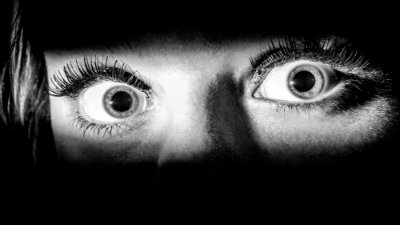
a signaling function that ensures our safety. Thanatophobia is the most common fear in patients with VSD. It is aggravated by a tendency to hypochondria and hereditary diseases present in relatives and family members. The fear of losing control over the situation leads a person to hypertrophied attention to his health and a constant search for a fatal disease that undermines his body. Religious people who believe in the existence of hell are often susceptible to thanatophobia.
Fear of death in VSD is provoked by overexcitation of the cerebral cortex and mismatch of its activity with the autonomic nervous system.
Fear of cardiac arrest
Cardiophobia forces a patient with VSD to closely monitor their health, pulse, blood pressure and sleep position - sleeping on the left side is taboo for cardiophobes. An attack of fear of cardiac arrest is usually short-lived, but in advanced cases it can last for several days, exhausting the nervous system to the limit. A person calls an ambulance at the slightest tingling in the chest, is in constant mental tension and is unable to relax.
Fear of going crazy
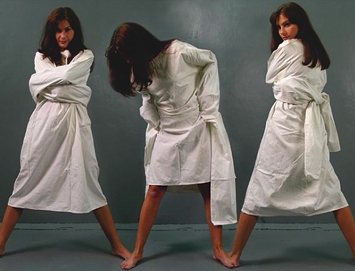
Fear of insanity arises from the fear of losing control over one's own mind, which leads to uncontrollable hysterical states. A person begins to fear his thoughts and actions, and suspects that he has schizophrenia and other mental disorders. There is a fear of saying something crazy, looking like a fool in front of others, or doing something bad. Such behavior becomes a reason for compulsory treatment in a special institution.
Symptoms of Cardiophobia
They help determine that a person has cardiophobia - symptoms that clearly show the presence of a pathological fear of cardiac arrest. The following behavior is typical for a person suffering from this phobia:
- fears possible heart attacks;
- it is difficult to be alone without supervision (in case you need urgent help);
- most often shifts household chores onto others;
- any stress is excluded (people quit sports, quit their jobs),
- quite often there are disturbances in personal life (afraid to have sex);
- literary interest is limited to medical literature and reference books, and the list of favorite programs includes all those related to health;
- is restrained from going outside on his own, cannot stay indoors on his own (as a result, it may be observed in the future, or vice versa).
Among the most striking symptoms of cardiophobia are:
- sleep disturbance (a person suffering from cardiophobia fears that the heart may stop during sleep);
- increased excitability and irritability;
- dependence on vitamins and various drugs (most often these are dietary supplements);
- sensations of discomfort and pain in the chest;
- fixation on the work of the heart and breathing;
- inexplicable anxiety and fear of sudden death;
- during an attack: nausea, dizziness, rapid heartbeat, pain or pressure in the heart area, increased sweating, tremors of the limbs, difficulty breathing.
Why is heart rate deviation scary?
The danger of tachycardia lies in the development of additional pathologies of the cardiovascular system, since any disturbances (both acceleration of the rhythm and its deceleration - bradycardia) in the work of the heart wear out a vital organ and impair its functionality.
Frequent occurrence of tachycardia can lead to the following complications.
Thromboembolism
A type of blockage of blood vessels by a blood clot separated from the wall of the heart. The resulting clot enters the aorta and, as a result of blood circulation, passes to any organ.
The syndrome appears suddenly, affecting the blood vessels of the heart, brain, lungs, intestines and legs, which can lead to disability or death.
Myocardial infarction
A condition caused by coronary artery thrombosis. The main symptom of a heart attack is pain in the heart and inner part of the left arm. The patient feels a tingling sensation in the fingers and wrist.
Cardiogenic shock
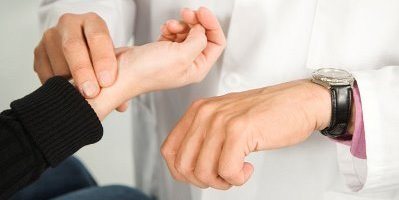
Extreme degree of heart failure resulting from impaired contractility of the left ventricle. At the initial stage, the symptoms of cardiogenic shock are similar to those of a heart attack, but over time the patient develops lethargy, body temperature rises, and pulmonary edema is possible.
Ventricular fibrillation (flickering)
A terrible condition that threatens life and is characterized by irregular contraction of muscle fibers (from 300 to 500 beats per minute). Fibrillation leads to cardiac arrest and clinical death, so during an attack a person needs the help of a specialist.
Sudden cardiac death
Non-traumatic cardiac arrest due to the development of certain cardiac pathologies. Manifestations of SCD include absence of pulse in the great vessels and blood pressure, dilated pupils, and pale skin.
The main mechanism of SCD is ventricular fibrillation, which provokes a violation of the pumping function of the heart.
Pulmonary edema
Syndrome caused by left ventricular failure. During an attack, the left side of the heart does not accept blood, which causes it to accumulate in the vessels of the lungs. The pressure in the tissues gradually increases, preventing gas exchange, and excess fluid sweats into the cavity of the alveoli. With edema, the patient experiences symptoms such as wheezing in the lungs, shortness of breath, and profuse sweating. The skin turns sharply blue, foamy pink sputum appears.
Fainting or syncope
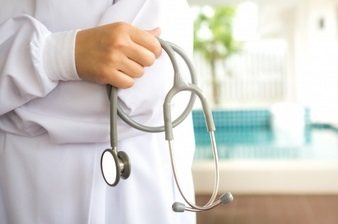
The patient's muscle tone decreases, the facial skin takes on an earthy tint, and the pupils react poorly to light. If the condition lasts more than five minutes, seizures may occur. Dizziness, weakness and blurred vision become harbingers of syncope.
Asthenia and weight loss
Frequent attacks of tachycardia lead to a lack of nutrients and oxygen to the organs. The body weakens, muscle mass growth stops, vitamin and mineral complexes are not absorbed, immunity is suppressed, and mental disorders appear.
A person suffering from asthenia feels tired, becomes irritable and restless.

